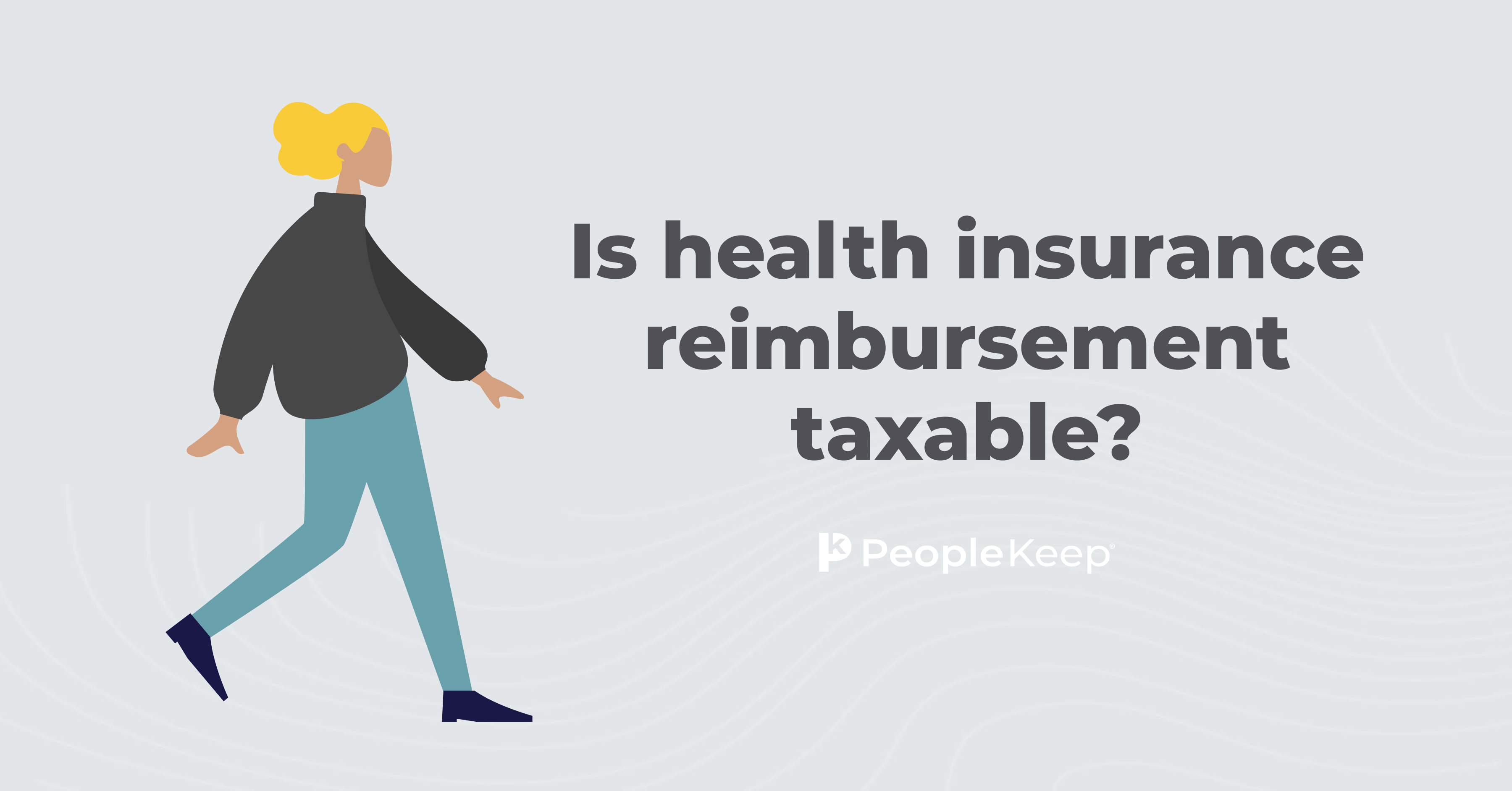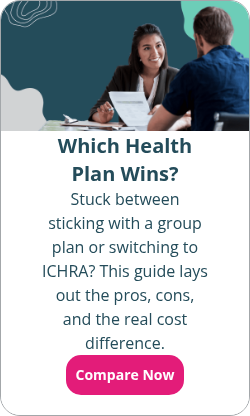Can I offer a health insurance stipend?
By Holly Bengfort on February 8, 2024 at 7:33 AM
For many small and medium-sized businesses (SMBs), offering a traditional group health plan is an expense it simply can't afford. Luckily, other more affordable and flexible options make offering health coverage possible.
A common question we get from SMBs is, “Can I offer employees a stipend instead of health insurance?”
The short answer is yes—some employers can provide workers with a health insurance stipend to help pay the cost of an employee's individual health insurance premiums. However, depending on the size of your organization, a stipend may not comply with federal law. Business owners should also be aware of the tax implications of a health insurance stipend versus a tax-free reimbursement plan like a health reimbursement arrangement (HRA).
In this article, we'll review taxable health stipends and tax-free reimbursement plans as alternatives to traditional group health insurance coverage so you can decide which is best for your organization.
Takeaways from this blog post:
- Small business owners often struggle to afford traditional group health plans, leading them to explore alternatives such as health insurance stipends.
- Employers can provide a health insurance stipend as extra wages in an employee's paycheck, but it's important to understand the tax implications and limitations.
- Health reimbursement arrangements (HRAs) are another alternative to traditional group coverage, allowing employers to reimburse employees for individual health insurance plans and other health-related expenses.
What is a stipend for health insurance?
First, let's talk about health insurance stipends, also called healthcare stipends or health stipends. One way SMBs can help workers cover the cost of health insurance and other out-of-pocket healthcare expenses is to offer a health insurance stipend, which is simply extra compensation in an employee's paycheck.
This stipend is the equivalent of simply grossing up wages—it's a flat monthly, quarterly, or annual amount given to all employees, which they can spend however they choose. While an employer may ask employees to spend their funds on health insurance, they can't require employees to do so.
You can’t require your employees to submit proof of purchase for items or services listed in IRS Publication 502. Employers also can't require employees to provide proof of payment for a health insurance policy.
It's important to note that the IRS treats money for the insurance stipend as taxable income for the employee. In addition, employers must also pay payroll taxes on reimbursements.
Stipends for medical costs can be an excellent benefit for employees looking for increased flexibility and personalization. This is because employees can choose which eligible expenses they want to have reimbursed.
According to our 2022 Employee Benefits Survey Report, 65% of employees surveyed said they value being able to choose their own benefits. Additionally, 87% of employees said they value employer-sponsored health benefits.
Who is a stipend good for?
While health insurance stipends come with extra taxes compared to HRAs, they can be a good option for organizations with many employees who qualify for premium tax credits.
With premium tax credits, also known as health insurance premium subsidies, individuals can receive a discount on their individual health plans. However, if the employee is offered an HRA, they may have to either reduce their tax credit by their allowance amount or opt out of it altogether to participate in the HRA.
With a stipend, employees can participate in their employer's benefit offering and collect their full premium tax credit. Stipends are also a good option for employers who don't want to deal with the administrative burden and compliance considerations that come with traditional group health insurance plans.
If you want to offer a health benefit to your 1099 contractors or international workers to promote retention, a stipend can help.
Taxable stipends are also an excellent option for organizations that want to offer an allowance for health benefits that HRAs and traditional group health insurance don't always cover.
However, while any organization can offer a stipend, only those with fewer than 50 full-time equivalent employees (FTEs) can do so instead of health insurance or an HRA. This is because a stipend doesn’t satisfy the Affordable Care Act’s employer mandate, which requires organizations with 50 or more FTEs to offer affordable health insurance to their employees.
If your organization has 50 or more FTEs, or you’re looking to offer a tax-free alternative to a stipend, an HRA is your best option.
What is a health reimbursement arrangement (HRA)?
Another alternative to group health insurance is an HRA. Health insurance stipends may be straightforward to set up, but the fact that they're a taxable benefit can be a downside for many employers. This is why many employers opt for the tax benefits that come with an HRA. Through an HRA, employers can reimburse employees for health insurance premiums and qualifying medical expenses. Employees can only use employer contributions on qualifying forms of insurance and out-of-pocket costs.
What type of HRA is best for your organization?
Several types of HRAs are a great fit for organizations of all sizes. For example, the federal government designed the qualified small employer HRA (QSEHRA) specifically for employers with fewer than 50 employees.
Another option is the individual coverage HRA (ICHRA), which works for businesses of all sizes and allows for additional customization with class sizes. For example, if you want to offer a group plan to some employees and an HRA allowance to the rest, an ICHRA makes that possible. An ICHRA can also help you satisfy the employer mandate.
Finally, there's the group coverage HRA (GCHRA), also known as an integrated HRA. The GCHRA works alongside traditional group health plan coverage. This is a good option for employers with a high deductible health plan (HDHP) who are looking to help cover the out-of-pocket medical costs that aren't fully paid for by the group plan.
Conclusion
You don't have to get stuck with rising healthcare costs. There are more cost-effective healthcare options than traditional group health coverage.
Small or medium-sized business owners have the option to choose between a taxable health insurance stipend or a tax-free health reimbursement arrangement (HRA), providing them with affordable, flexible, and easy-to-administer health benefits.
PeopleKeep specializes in personalized health benefits and helps thousands of organizations manage their benefits with ease. With our HRA administration software, you can set up and manage personalized health benefits in just minutes each month.
This blog article was originally published on October 21, 2013. It was last updated on February 8, 2024.
Check out more resources
See these related articles

Is health insurance reimbursement taxable?
Health insurance reimbursement can be tax-free for your business and your employees. Explore the tax differences between HRAs and healthcare stipends.

Can I reimburse employees for health insurance?
Learn about the two most common ways to compliantly reimburse employees for their healthcare: taxable stipends and health reimbursement arrangements (HRA).

Health vs. wellness stipends
Learn the differences between health and wellness stipends. Discover how each supports employee well-being and boosts workplace satisfaction.



